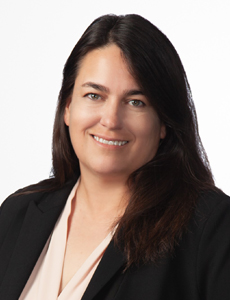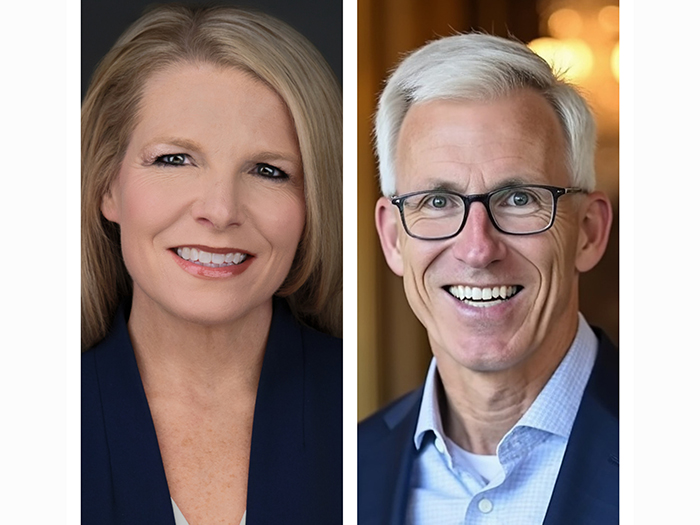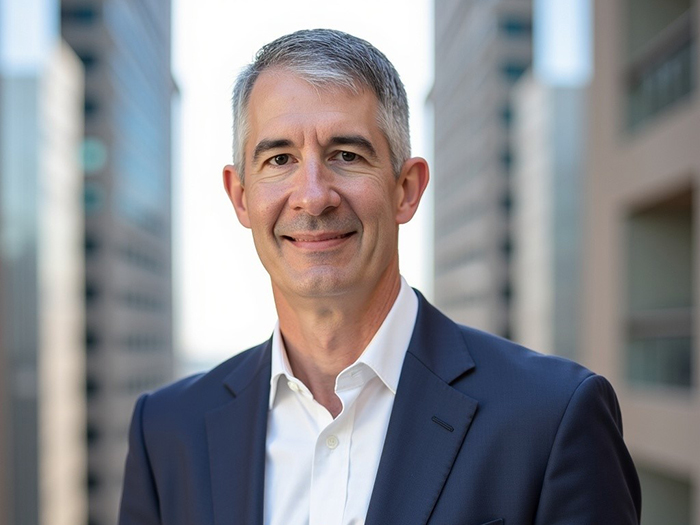As Freight Shipping Sails Toward Cleaner Fuels, Will ESG Prove to Be a Liability or a Benefit?

Part 1 of this three-part series on insuring the energy transition in the freight transportation industry examined the logistical and regulatory hurdles ahead, and what the insurance industry can do to mitigate its risks and facilitate much-needed collaboration. Part 2 continues below.
July 2023 was the hottest month on record: The warning signs of climate change are becoming impossible to ignore. Something must be done — but especially when it comes to trains, planes and ships, the transition to greener sources of energy will require concerted effort on a scale the transportation sector has never seen.
Of course, the insurance industry is an indispensable player in that effort.
“I think there’s a moral obligation, as a financial institution, to leverage the overarching support that we can provide as an investor and an insurer in order to facilitate the transition,” said Gabrielle Durisch, global head of ESG and sustainability solutions at Allianz Commercial.
The pressure to transition to clean fuels comes from multiple sides: regulatory, financial, even social. Together, these pressures drive an ESG program — a framework that’s intended to guide a company’s progress but comes with its own inherent risks.
Ideally, a company’s ESG platform is a measure of its ability to satisfy stricter regulations, its roadmap to a greener future and a public statement of its values. But it also comes with its own hurdles: the anti-ESG movement on one side, and potential accusations of greenwashing on the other.
Scanning the Horizon
Just how big a problem are greenhouse gas emissions due to freight transportation? The industry’s sources of pollution are too numerous to describe in detail here; what follows employs cargo shipping as a test case, but the same principles apply across the transportation sector.

Jamie Nawojchik, head of marine and energy property, Zurich North America
“Approximately 90% of the world’s commodities move by ship, largely for cost reasons,” said Jamie Nawojchik, head of marine and energy property for Zurich North America.
Thanks to scale, moving freight by ship is less polluting than most other forms of transportation on a Cargo Ton Miles basis. Nonetheless, cargo ships account for roughly 3% of greenhouse gas emissions; if the shipping industry were a country, it would be the world’s sixth-largest greenhouse gas emitter. And because these ships will be so difficult to convert to green energy, it’s expected that this portion will only grow, reaching 13% of global emissions by 2050.
“There are industries that are harder to abate than others,” explained Kelly Malynn, maritime cyber physical damage product leader and ESG strategic lead at Beazley, “and some in the maritime sector fall into that bracket.”
The transition also requires large up-front investment with no inherent financial payoff. “It’s not akin to previous industrial revolutions, where we were doing it for efficiency or to save costs,” Malynn noted.
Instead, the rewards are largely external. Whether it be to methanol, ammonia, hydrogen, nuclear or even wind — all of which are currently being explored as possible clean fuel sources for transatlantic shipping — the incentive to transition is rooted more in ESG than in EBITDA.
In fact, most of these energy sources are already in limited use. Last year, Danish shipping company Maersk (which is very vocal about its ESG policies and has publicly expressed a goal to be net-zero companywide by 2040) ordered six green methanol vessels, bringing its total fleet to 19.
In a related statement last October, Maersk said it has “set a net-zero emissions target for 2040 across the entire business and has also set tangible near-term targets for 2030 to ensure significant progress. This includes a 50% reduction in emissions per transported container in the Maersk Ocean fleet compared to 2020 and a principle of only ordering newbuilt vessels that can be operated on green fuels.”
Clearly, Maersk is determined to be a world leader in green shipping. It’s an admirable goal, but it raises an important question: Why? Given the expense, the danger, and the risk of attracting negative attention if it fails to meet its targets, where’s the benefit in leading the shift to green energy? And more to the point, where’s the benefit in making its ESG goals public?
Changes in Atmospheric Pressure
In fact, there are multiple reasons why a company, especially one whose business model is predicated on fossil fuels, would make a public commitment to green energy.
In marine shipping, external pressure comes in the form of emissions reductions benchmarks imposed by governing bodies. The International Maritime Organization (IMO), an agency of the United Nations, is one of the major driving forces here.
As a recent report from Allianz noted, the IMO has committed to halving greenhouse gas emissions from international shipping by 2050 (vis-à-vis 2008 levels) and reducing carbon intensity by 70% in the same period.
The IMO relies on several benchmarking measures to regulate its member organizations, including the Energy Efficiency Design Index (EEDI), the Ship Energy Efficiency Management Plan (SEEMP), and the Carbon Intensity Indicator (CII) that came into effect at the beginning of this year.
The International Union of Marine Insurers (IUMI), meanwhile, represents underwriters in 45 countries, including the U.S. by way of the American Institute of Marine Underwriters (AIMU) trade group. Organizations like AIMU allow insurers to directly support the international union’s efforts to promote greener shipping via guidelines and regulations.
“The regulations are known to be coming. Planning for them is absolutely smarter than reacting to them. And many customers are being proactive, not just because of the regulations but because of their corporate philosophy,” said Nawojchik. “Customers want to partner with insurers who understand ESG and have that philosophical alignment.”
While the IMO and IUMI represent hard external pressures, there are softer ones as well.
“There’s social pressure,” said Rebecca Davis, environmental and litigation partner at Arnall Golden Gregory. “There’s no way around that. But at the end of the day, the hope is that [green energy] will be a cheaper source.”
That social pressure often translates into pressure from investors — even the investors of other companies.
“When a larger company develops its sustainability report, [it has to] look at what the companies below it are doing, look at what its vendors are doing,” Davis continued. “They actually bring up into their own report all of the information they get from their vendors. If they’ve got a vendor that is not implementing any type of ESG strategy or environmentally sensitive strategy, that could impact their own reporting, depending on their materiality assessment.”
Of course, any vendor responsible for marring its buyers’ sustainability reports is vulnerable to losing its contracts.
Full Steam Ahead
Not all pressure to set ESG standards is external: Publishing ESG objectives can also translate into strategic advantage.
This can include “planning and budgeting for what are likely going to be global or national rules and regulations and building this into your business model in a smart way, versus reacting,” Nawojchik explained.
“Also, by being public about your objectives, you can find companies and individuals who have similar philosophical approaches and collaborate with or learn from each other, ultimately helping everyone achieve needed improvements faster,” he continued. “If you are not engaged or publicly declaring your targets, you’re going to be trying to solve for this on your own.”
While risky, being an early adopter of new technologies can also place a company in a more favorable position.

Kelly Malynn, maritime cyber physical damage product leader and ESG strategic lead, Beazley
“The benefits of being one of the early adopters is that you’re at the forefront, you’re making decisions further out, and therefore you can make them in a much more strategic way,” Malynn said.
“To not start the green energy conversation now, as a ship owner, in three or four years’ time, when we get closer to the targets and you’re having to make those changes quicker, you’re going to be in the queue,” Malynn added. “You might not have the time to make a decision … In terms of a pure business case, [the incentive] is limited. But in terms of the wider targets, now’s the time to start thinking about that move.”
ESG benchmarks may also help keep every employee and department of an organization sailing in the same direction.
With a clear ESG policy, “as a company, you understand where you’re going and you can build up the pillars in order to get there,” Malynn continued.
“Having a defined strategy means you will know where you’re going. You also therefore are not making promises, presumably, that you don’t know how to deliver. A strategy and end place allow you to work back and build up how you’re going to get there, rather than saying ‘I want to achieve this goal’ when it’s not feasible.”
Unfavorable Currents
While ESG has its advantages, there’s always a potential storm cloud on the horizon. In this case, it’s the anti-ESG movement.
While it’s commonly understood to be astroturfing, the anti-ESG movement is nonetheless leaving a very real stain on U.S. legislation. Over the past few months, we’ve seen laws proposed that would prohibit states from spending public money on ESG goals or investing state pensions in ESG funds, prevent private asset managers and investors from relying on ESG criteria, and even ban insurers from weighing ESG considerations when setting their rates.
“Oddly enough, there’s a lot of social pressure to make the change, but there’s also pressure to not make the change,” said Davis. As a result, “we’re seeing pushback with an anti-ESG movement.”
In the end, it’s up to individual companies to determine which way they think the wind is blowing.
“Especially millennials and Generation Z — as they enter the market, they have a different view of everything,” Davis said. “That push is going to overwhelm the anti-ESG movement, but I think there is actually some pressure, depending on who the company is and who they service, not to implement some of these changes. There’s a kind of analysis that some companies need to do to weigh the costs and benefits of all the changes.”
But for Davis, the outcome is already clear. “Even if anti-ESG regulations are put in place, the movement is going to continue, because unlike the anti-ESG movement in response, the ESG movement is driven by generations; it’s driven by actual people behind it in the market.”

Rebecca Davis, partner, commercial litigation, Seyfarth
The best thing companies can do, Davis said, is to “plan early and often. It’s coming … It’s not hard to look at the tea leaves and see [that] more people are going to want to see net-zero carbon, more people are going to want to see fair work practices, they’re going to want to see equality in the office, they’re going to want to see more emphasis placed on DE&I. All of that has been happening without regulation. So companies, especially private companies … they can go ahead and start planning for these transitions.”
As for how the insurance industry can help, Davis said, “they can basically look at our products, see where the exclusions are [and] see where they can make the changes to meet various new products that are going in.”
Allianz’s Durisch agreed: “If we really want to effect change, we need to understand the challenges that there are out there, and then we can address those challenges. If an organization is looking to reduce their own emissions, they shouldn’t be put off from doing that because of the anti-ESG movement. They should stick true to their values and continue with their ambition.”
And for ESG supporters, there’s good news: There are signs that the anti-ESG movement is already running out of steam.
Heading Into Treacherous Waters
Anti-ESG movement notwithstanding, the attention a company attracts when it makes its ESG goals public can be an enormous benefit. Should it sail off-course, however, that attention can quickly become a risk.
Accusations of greenwashing — of portraying one’s product or service as more environmentally benign than it really is — are at minimum a threat to a company’s reputation, and could even lead to financial liability.

Gabrielle Durisch, global head of ESG and sustainability solutions, Allianz Commercial
For Durisch, not all greenwashing allegations are the same.
She said, “There are different types of greenwashing that come up. Some accusations are that companies are making statements that aren’t accurate. Some of them are that they’re making statements that aren’t quite good enough to get them to where they’re saying they want to go. This might lead to companies becoming silent or not publicly committing enough in this area.”
Overly vague language, too, may inflict a reputational cost, if not a legal one.
She also noted that an organization’s response will depend on the greenwashing accusation it faces. Most fundamental of all, she said, “whenever an organization makes a public statement, it should be very thoroughly checked … The key thing for an organization to limit their exposure to greenwashing is to make sure that the statements they’re making are accurate and supported by evidence.”
It’s a difficult position to be in, but companies must find their own balance between taking ambitious steps to become greener — including formalizing its ESG stance, if necessary — and taking care to substantiate its commitments. This requires “understanding the difference between short-term targets, long-term targets and aspiration,” Durisch said, “and making sure that that’s clear in any statement they make publicly.”
Of course, the future is never certain, and an inability to meet even well-planned goals is always a possibility. Here too, Durisch counseled, honesty is the best policy: “If you are falling short of your climate targets, you still need to make sure you show credible explanations as to why you’re falling short, what the challenges are that you have in front of you, and how you’re going to change your actions to address those and continue to try and meet them.”
But the multimillion-dollar question remains: When does a greenwashing accusation turn into a claim? These cases typically hit one of two policies: representations and warranties, or directors and officers.
“What types of reps and warranties are we making to customers?” said AGG’s Davis. “Are we overestimating the changes we’re making with respect to net-zero by implementing technology? Are we being honest with what we’re telling our customers if we’re in the transportation industry? Do we need to worry about any type of greenwashing claim with respect to any information we’re giving our customers?”
A veneer of environmental stewardship may be a fraudulent way to burnish a company’s share price, but lawsuits alleging share manipulation via ESG are largely unexplored terrain.
“So far, those claims have been very hard to prove,” Davis said. “Shareholders, however, are continuing to pursue them. Most of them have not gotten anywhere, just to be clear; most have been dismissed. However, ultimately, the plaintiffs’ bar is going to figure it out, or there’s going to be a court that allows it. If the company is basically telling shareholders one thing and doing another, it is the basis for a lawsuit.”
When that happens, “insurance may actually cover that,” Davis said. “It would probably be through a D&O policy. But there’s a possibility — and it does happen — that the insurance company is going to cover a greenwashing claim.”
These charges must be evaluated case by case, but “a lot of it is through deceptive practices,” Davis said. “It could result in reputational damages, but typically it is investor-led litigation, derivative actions, product liability lawsuits and consumer protection cases, and causes of action will include, routinely, just fraud. And they can be brought in state and federal courts. It’s a broad, broad spectrum, but they do typically hit D&O policies, and they do typically hit the boardroom.”
As the regulatory terrain surrounding environmental disclosures matures, Durisch said, making ESG statements public will become easier. “What we need is alignment in the types of reporting that people are doing, and I know that the international accounting bodies are looking at how to align the types of non-financial disclosures that organizations should be making. It is quite novel to report out on this type of information.”
The increasing focus on transparency may be new, Durisch said, but the work that goes into it is not.
“If you think about the environment or the impact of physical risks on an organization, we’ve always been looking at that in our property book. If you think about societal impacts that customers or organizations might be having, we’ve covered that through workers’ liability insurance, for example,” Durisch continued.
“And on governance, we’ve always offered financial lines, D&O cover and, more recently, cyber. So ESG isn’t new, but the transparency and the demand for external clarity — that’s really what’s new … It’s something we need to start addressing and understanding and getting used to talking about, and being more confident talking about it.”
Charting a New Course
Who better to lead that conversation than the risk management and insurance industry? When it comes to experimental energy sources, underwriters are just as hungry for data as everyone else, but they also have the means to collect and interpret that data.
Given all the unknowns, it’s likely that underwriters who take on shipping companies experimenting with new energy sources will prefer to start small, rather than get on board during the final stage.
“From an insurance point of view, the risk of trying to lead the energy transition is that you’re on the frontier of underwriting some of this emerging risk,” Durisch said. “That’s probably one of the main ways we’re trying to lead. But the benefit is that you can shape the way the energy transition happens.”
And insurers want to get involved at a much earlier stage, such as the R&D stage or in pilot projects, she added.
“We’re in a unique position. We have quite a close connection with customers, either through brokers or directly with customers, to understand how their businesses are changing, and to facilitate that change with risk transfer solutions or our risk engineering expertise,” Durisch said.
This unique position lets insurers “look at the operations of an organization and help them understand how to mitigate some of the risks they might face in changing their business,” she noted. “We don’t know more than our customers. But what we can do is learn from our customers and build that knowledge base, [to] notice best practice and support it.” &
Part 3 of this series, a look at the technical challenges insurers must consider when underwriting and benchmarking emerging fuel technologies, can be read here.










